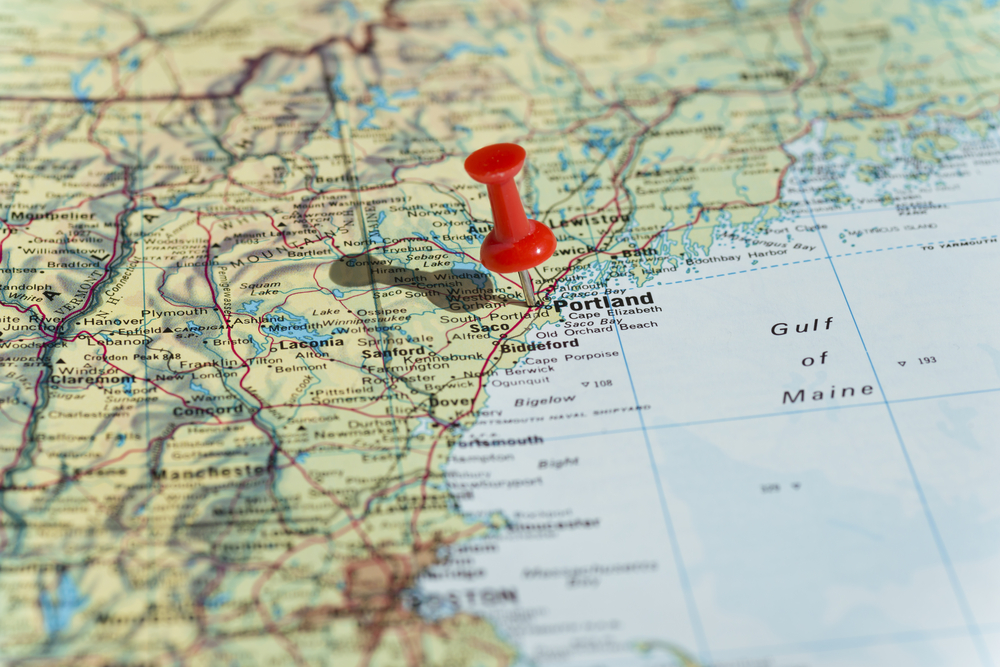What Does This Atypical Donation Say About the State of Regional Higher Ed Fundraising?
/Istimages/shutterstock
Universities continue to rake in mountains of cash, thanks to a bullish stock market, alumni donors who made their millions far from familiar coastal enclaves, and fundraising teams that never stop fundraising.
This perfect storm occasionally generates some rather unconventional gifts.
American University, for instance, recently netted a conference venue in Northern Virginia known as the Airlie Center, a donation valued at about $15 million. UC San Diego received a $4.7 million grant from the Ray and Tye Noorda Foundation to study autism spectrum disorders. The catch? The study will focus on the therapeutic benefits of medical cannabis research, historically a "third rail" for university fundraisers.
Now comes word that the University of Southern Maine (USM) has received what it describes as the largest gift in its history—a vast map collection, including a 1475 map of the Holy Land and the first modern printed map, valued at approximately $100 million from longtime patron Harold Osher. (An Osher family spokesman said the total could be as high as $200 million.)
Osher, a retired cardiologist, donated his initial collection of historic maps, charts, and documents to USM in 1989. Five years later, the university opened the Osher Map Library and Smith Center for Cartographic Education. The Osher Map library now has about 450,000 maps in its collection, including gifts from other collectors.
Harold and wife Peggy have also provided extensive support to the Portland Museum of Art. Peggy was involved with the museum since 1961 and served on its board of trustees for more than 50 years. The museum made Peggy a lifetime trustee in 2011.
In 2013, the museum displayed the Oshers' Winslow Homer wood engravings related to the Civil War. "You have to be lucky and able to do it," Harold said at the time. "You have to have the time and the funds and the energy to find these things and put them together. We’re happy to donate them, because now everybody can see them. That’s the whole point."
"We live in Portland, and the Portland Museum of Art is a world-class small museum. It’s a very rewarding thing."
After Peggy passed in May, PMA Director Mark Bessire said she brought the museum "into the modern world," and was tireless in her efforts to build its collections and education programs.
The Oshers aren't the only donors providing big-city support to what Harold called a "world-class small museum."
A couple years back, Judy and Leonard Lauder gave the Portland Museum of Art a $5 million matching donation to increase its endowment by a total of $15 million. Eschewing the trappings of risky capital projects that have plagued larger museums like the Met, their statement read, "While we recognize the importance of buildings, we also recognize the tremendous importance of economic stability for cultural institutions."
Harold Osher's recent donation of maps also includes an undisclosed amount of cash to supplement an existing $3 million endowment. Family spokesman Glenn Parkinson said the gift was coincidental to Peggy Osher’s death. "This has been in the works for a long time, and unfortunately, she died just before the resolution."
University President Glenn Cummings described the gift as "a transformative partnership. It’s one of the most significant collections in the country, and it is the largest gift in USM history and potentially in UMaine system history. We’ve never had a gift of that size or value."
By bringing the Portland Museum of Art into the "modern word" and supporting USM's efforts to build one of the "most significant" collections of maps in the country, the cumulative impact of the Oshers' philanthropy exemplifies another driver behind the ongoing higher ed fundraising goldrush: The rise of regional donors using their millions to put places like Portland, Maine on the map.







































